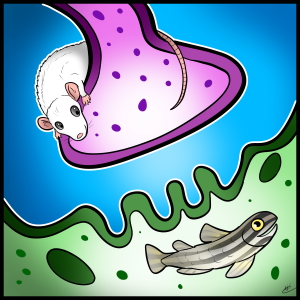Identification of pathomechanisms
For many neuromuscular diseases, the genetic cause is known, and the challenge is then to translate these gene discoveries into patient-tailored treatments. To achieve this, disease-relevant models are essential to support characterization of the disease, unravel the pathogenic mechanisms, identify new therapeutic targets for intervention, and perform preclinical testing where potential therapeutics/targets are identified. The full elucidation of pathomechanisms is crucial not only to fully understand the molecular causes of the diseases but also to define starting points for testing of potential therapeutic interventions. To this end, our lab generates animal models and makes use of patient-derived material, often in close collaboration with other international research groups, using techniques including cell biology approaches, functional studies, genomics, transcriptomics, proteomics and immunological techniques such as immunofluorescence studies. The development of animal models (mouse and zebrafish) for a variety of neuromuscular diseases has enabled us to study the phenotypic consequences of gene knock-down and associated pathomechanisms in vivo, which not only allows validation of gene discoveries but also provides insights towards ways of correcting the defect and thus towards therapeutic targets.

